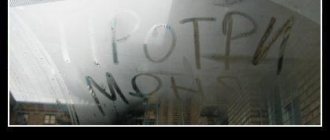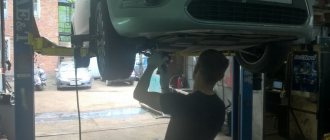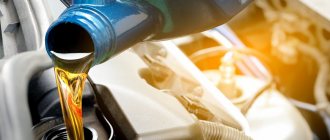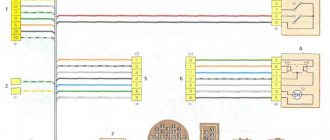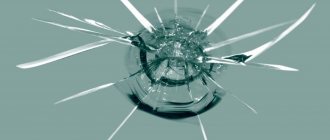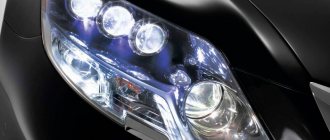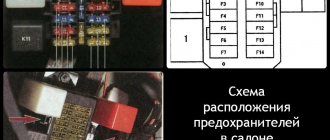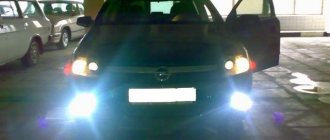A car is a great assistant in everyday life, but sometimes incidents happen to it. All of them, one way or another, are associated with careless operation or poor quality of spare parts. Any mechanism could fail at any moment. Take, for example, lighting, without which, according to new laws, it is now impossible to move during the day, let alone at night.
Car headlights ensure safe driving at night, so they require constant care. Moreover, this is not just replacing light bulbs or batteries, but also correctly adjusting the light beam, which can blind drivers of oncoming cars. In addition, there should be enough lighting for you so that you can see the roadway without any problems. However, not all so simple! Often, even the most trivial reason, such as fogging, can significantly reduce the efficiency of the headlights.
At the same time, water condensation forms inside it, settling on the glass. Since water itself is a lens, light beams passing through it and then through glass are scattered and reduced in length. This is a fairly common problem, so car owners have long found the reasons for its occurrence and solutions.
Car headlight device
To successfully repair and service any unit, you need to know its structure. The headlight is an emitter of light, and not a chaotic, but a clearly directed flow. It is achieved thanks to the constituent elements that make up the device:
- Deflector. This part is called a reflector, although it performs another function. Light fluxes from the source diverge in different directions, so they must be collected together and directed to one point. This is what the deflector does. Its shiny coating is capable of reflecting, and its parabolic shape collects rays.
Car headlight deflector - Light diffuser. An element that converts a point light flux into a volumetric directional beam. In addition, it protects the remaining elements of the headlight from mechanical damage and also creates a seal. This part can be made of glass or plastic - the latter is more widely used.
Car headlight diffuser
- Incandescent lamp. A light source that converts electric current into thermal energy. They come in different types and are classified depending on the gas filling the flask - xenon, argon, halogen, etc. In addition, the lamp must have 2 filaments - thick and thin, respectively, for low and high beam.
Car headlight bulb
The entire headlight is housed in a plastic or iron housing, which is mounted on the car frame. These three main elements (deflector, lamp, diffuser) provide good visibility when moving in the dark. They function as one unit and are located in a space isolated from the environment, which prevents the ingress of moisture and debris.
Car headlight device
Types of car headlights
Manufacturers of components and assemblies are trying to improve them as much as possible. This is accompanied by new technologies, as well as the use of different materials. In our case, this can also be observed using the example of light diffusers. If earlier they were made of glass, now plastic has come into fashion. This is how 2 types of headlights appeared:
- glass - they were installed on cars of the last century, however, you can still find them now;
- plastic - a more modern option, which is popular among all manufactured cars.
It is no coincidence that the second type turned out to be the leading one, since it has many advantages over glass. First of all, it is low production cost, as well as high moldability, thanks to which we can see headlights on a car of different geometries.
Glass (left) and plastic (right) diffusers
The most important reason for switching to plastic was safety. After all, broken glass is a potential hazard in an accident. Test tests carried out by experts have shown that it is desirable to use less such materials in the production of the machine. Soon a decision was made to produce plastic light diffusers for headlights, which has remained in place to this day. However, there is one problem that plagues all drivers - dimming. Under the influence of the sun, this material acquires a yellow tint, which prevents the passage of light. True, this can also be restored by ordinary polishing.
Headlights can also be classified according to the lamps used. They are different and have their own advantages and disadvantages:
- halogen - inside the glass flask there are 2 filaments and a halogen buffer gas - a mixture of iodine and bromine. They are the longest lasting and most common among car headlights;
- xenon - instead of halogen, the lamp contains xenon and 2 electrodes, between which an electric arc passes. It is because of this that bright white light appears, the energy intensity of which is 3 times greater than in the previous case. Because of this, xenon should only be installed by a specialist so that it does not interfere with oncoming traffic;
- LED - white light, strongly reminiscent of daylight, consumes very little current, and small diodes allow you to decorate the headlight in different styles.
Comparison of car headlight bulbs
The last two types of lamps are the most relevant, since their light is several times greater than halogen, and their energy consumption is much less.
How to troubleshoot problems, recommendations from experts
The desire to save a little on repairs after an accident leads car owners to decide to install non-original spare parts on the car. And lighting elements are no exception, because the cost of an original headlight is sometimes simply prohibitive.
Problems arise if a low-quality Chinese counterfeit is installed. It is sometimes difficult to detect the location of damage; upon external examination, defects are not detected.
There are two options here:
- look for damage to the headlights
- purchase and install a new one, if not original, then at least more expensive and of higher quality.
In order to get the desired result as a result of repairs, experts recommend:
- at the first stage of work, thoroughly dry the headlight - the moisture remaining inside will again cause fogging
- If removing the headlight is problematic, you can use a hairdryer, the hot air emanating from it will help rid the headlight of moisture.
Next, you will need to use a sealant to ensure reliable insulation of each junction of the body shell and glass.
It is recommended to use colorless sealant - in this case, the joints will look more neat. Using the same sealant, you can seal all small cracks.
Moist air can enter the headlight if there is no rubber or plastic gasket where the light bulb adheres to the housing.
Why do headlights fog up from the inside?
Automotive optics, like any component, can fail, despite the fact that it cannot be disassembled. After all, the headlight comes from the factory sealed, that is, during assembly, the light diffuser is tightly glued to the edge of the reflector with a special compound that does not allow air to pass through. This prevents moisture and dust from getting inside the optics, because when the deflector is dirty, the light output is much lower.
In addition, the headlight may fog up. This happens due to poor sealing, which allows water to get into it. When the incandescent lamp creates a high temperature, the moisture evaporates, and then, as it cools, small droplets form on the glass and reflector.
Headlight fogged up from inside
To fix this problem, you must first understand why it appeared. It is clear that the headlight fogs up due to a broken seal, but exactly where it connects with the environment is unknown. One can only assume that air and moisture can penetrate through compacted areas, the insulating elements of which are outdated and have lost their properties. Simply put, a gap has appeared between the gasket and the part, through which unwanted substances enter. The reason for this phenomenon is often:
- Loose connection between the diffuser and the reflector. This can happen due to poor-quality sealant that has either dried out or come off the surface.
- Violation of the incandescent lamp socket. The reflector has a specially equipped hole that has space for gasketing; however, most often the lamp is mounted without it - on pure metal or plastic. Then it must be pressed from above with elastic iron latches.
- Crack on the light diffuser. This is the most common cause of foggy headlights, since the likelihood of a crack occurring is much higher than depressurization. It often happens when a stone bounces off an oncoming car and hits the optics. However, a plastic diffuser is much more difficult to break because it can bend, while glass breaks at the first vibration.
These are the main reasons why headlights fog up, but all of them, one way or another, are associated with a seal failure. That is, in order to eliminate the problem, it is enough to remove all the gaps and leaky places. If there is a crack in the light diffuser, all that remains is to buy a new one, but it will still need to be installed correctly. In general, such things are not disassembled, but are bought assembled, and only in pairs. This means that if the optics of only one headlight are damaged, then it is better to buy two new ones at once, since they cannot be repaired.
Ways to fix the problem.
In a situation where you become the owner of such a problem, it is always important to know what to do. Check out these time-tested tips and years of experience that will tell you how to fix such problems.
- Dry heating of headlights. This method does not involve operation on an ongoing basis. It is acceptable to use it once, a maximum of several times, but no more. The procedure for working with it is as follows: first, disconnect the lampshade, then allow the tension of the fasteners to loosen and slightly move them out of the recesses. Next, turn on the low beam and let the bulbs work for a while, then turn off the light and put the cap back in place. Practice shows that if you take the above steps at night, the next morning the moisture in the headlight housing should disappear.
- Inspection of seams for tightness. You should carefully examine all connecting areas and joint areas for airtightness. If cracks or minor damage are detected, it is necessary to apply a special moisture-resistant sealant. For this purpose, the best option would be a silicone-based composition. Its “lifetime” is more durable than alternative means, in addition, it has high density and water resistance and a transparent structure. These days, a similar substance can easily be found in every specialized store selling automobile spare parts. The modern market is rich in variations of sealants created to fill areas formed due to mechanical damage. They neutralize these voids, prevent further penetration of moisture, dry at incredible speed and do not interfere with the refraction of light! However, there are spots in the sun too. Among the negative aspects of such mixtures: the adhesion of dirt, which significantly reduces the productivity of the optics. In addition, the sealing composition is characterized by a fairly short life cycle. There are situations when moisture enters the headlight housing from the inside. In this situation, in order to eliminate condensation, which has become the culprit of fogging, an impressive sequence of internal sealing measures should be carried out. It involves disassembling the lamp unit and then uncoupling it from the electrical circuit. Then it is necessary to seal all the holes using special gaskets and sealing mixtures. They effectively cope with their task, but over time they lose their elasticity: liquid gets into the headlight housing, which can fill even cracks or scratches invisible to the eye.
- Contact a service station. Qualified specialists will identify problem areas themselves and advise you on the most effective solution to the problem. There are often situations when microcracks form on fasteners or seams that cannot be seen with the naked eye. Detection of such faults is impossible without the use of special optical, electronic or laser equipment. Our technicians will repair the old part or recommend replacing it with another component.
- New headlight. Sometimes, its acquisition turns out to be the best alternative to all of the above methods. The best option is to give preference to original spare parts. This way, you eliminate the possibility of buying a defective or poorly designed product.
